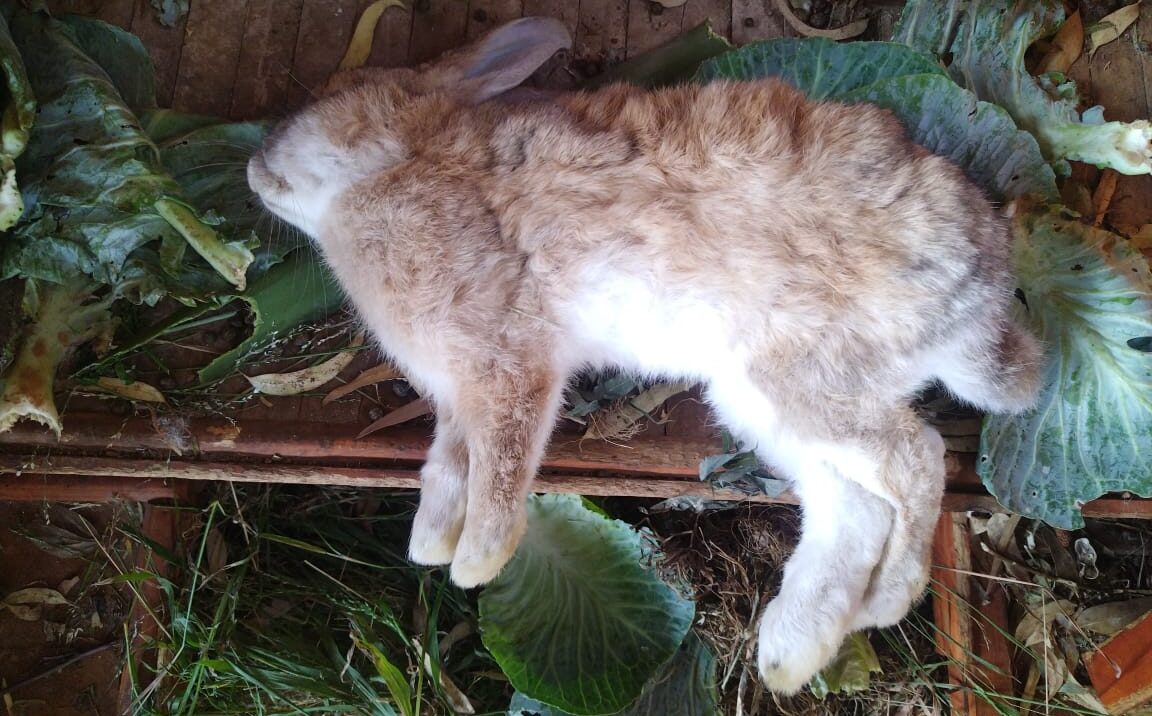As the epidemic moves into its fourth month in southern Africa reports of fatalities due to Rabbit Viral Haemorrhagic Disease (RVHD), the vast majority of reported cases has been in the greater Gauteng region. That notwithstanding, cases have been reported and confirmed throughout the country, as well as from as far afield as Namibia, Lesotho and eSwatini.
Sometimes also called Rabbit Haemmorhagic Disease or Rabbit Haemmorhagic Virus Disease, (RHD or RHVD) the disease is invariably fatal, and although it only affects lagomorphs (rabbits and hares), it affects both wild and domestic animals.
Wild hares
Thus, colonies of wild hares, formerly seen living undisturbed on open veld, simply disappear, seemingly overnight. Closer inspection may reveal one or two carcasses, but activity from the colony just ceases.
Likewise, many smallholders would allow their domestic “bunnies” to live undisturbed on their properties and they could be seen going peacefully about their business on road verges and elsewhere. Now they, too, have been decimated.
Domestic rabbitries
But the epidemic hasn’t spared keepers of caged rabbits, such as specialist breeders of exotics, commercial farmers of meat rabbits, and those who have kept rabbits to provide protein for their families. Also affected have been petting zoos, party farms and care homes where the rabbits have performed useful therapeutic functions for patients.
Wiped out
The speed and extent to which the disease has spread has been devastating. In some cases entire rabbitries of hundreds of animals have been completely wiped out. And in the cases where animals have been spared the strict embargoes on the sale and movement of rabbits that are necessary to prevent further spread, have affected the livelihoods of those who trade their animals for profit.
Gauteng Rabbit Breeders’ Association
Although sterling work has been done by Gauteng Rabbit Breeders’ Association chairman Gavin Grgurin and his team in raising awareness nationally of the disease, and in recording suspected and confirmed outbreaks, many cases go unrecorded.
This may be through ignorance of what is causing mortalities among rabbits and hares in one’s vicinity. Or it may be because of the fear of supposed “stigma” resulting from one’s reporting of cases in one’s rabbitry.
Vicious virus
Causing the disease is a vicious virus – a real “stealth bomber” among viruses. It may be a few days after contracting the virus that the rabbit suddenly dies, but it is infective throughout this incubation period. Thus, other rabbits coming into contact with the infective one become infected, too.
Moreover, the virus can live out of host for some weeks, and can be passed on between rabbits through just about anything, from contact with insects that may have fed off an infected rabbit carcass to contact with infected veld, or hay feed or bedding, or from human clothing and footwear.
Disinfection
Disinfection of cages, bedding, clothing, footwear and utensils is possible and encouraged as is disinfection of hay feed.
There are few obvious symptoms that would prompt a rabbit keeper to effect some form of treatment, and death comes quickly. The deceased rabbit is sometimes found stretched out on its side, its head arched backwards. There may be slight signs of nasal or anal bleeding, but the only real confirmation is by laboratory examination.
Vaccination against the virus is possible, but expensive at about R500 per animal. Thus, it is only really viable in high-value breeding stock – and certainly not for wild or feral animals.
Whatsapp groups
The GRBA has established two Whatsapp groups to help rabbit keepers. A group for reporting suspected and confirmed cases can be found at RVHD HOTLINE, while a support group can be found at RVHD SA Support. Both are free to join.
Main image: Characteristic position of dead rabbit. Gauteng Rabbit Breeders’ Association.

